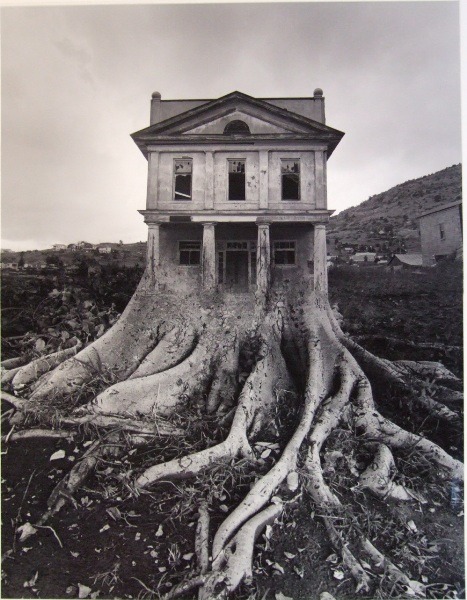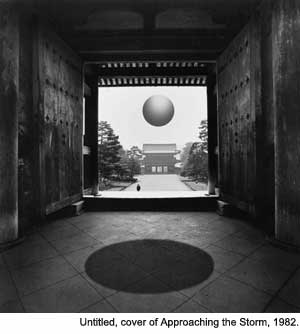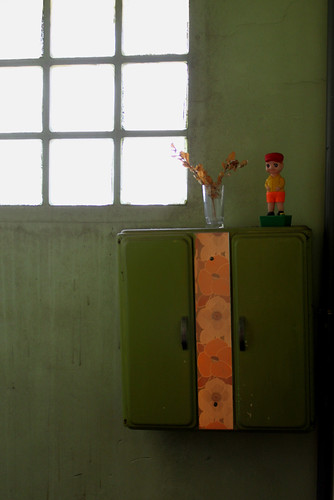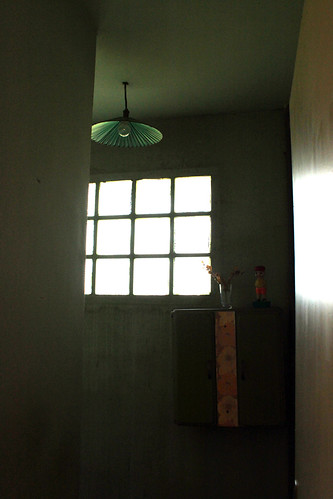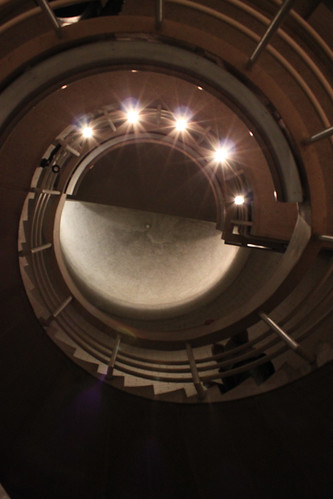Working title
Outer space/inner worlds : borders, invasions, warfare tactics.
Aims and objectives
I am interested in exploring the various dynamics, of both creation and aggression, between the outer world and the individual’s inner world. I will use photography and video, media ironically considered documentary and objective, to capture and reproduce the way our mind reacts to and reinvents reality and our surroundings.
The following are different angles under which to explore this problematic:
1) visually document the way imagination reinvents physical space.
2) exploring the possibilities of moving image to make dreams/inner worlds “real” and share them with others. Especially, immersive video installations may create a more “real” feelings than images projected on a screen. I hope this may make it possible to engage in a deeper level of communication with the audience.
3) researching the importance of the house and more generally private space in the development of a person’s individuality, and how a house may become a physical projection of its occupier’s inner world.
4) researching the way individuals may project their anxieties onto the physical space.
5) researching tactics employed by authorities to control individuals’ thoughts and behaviours by manipulating the private space available to them. For example, madness as a “political illness” used to make undesirable people disappear.
6) researching coping tactics developed by individuals in response to this attempted control. This may take the form of retreating to one’s inner world, or reclaiming public space.
Context
Historical
My main inspiration is Surrealism and its aim to reconcile the accepted reality with the individual’s imagination, in order to reach a superior reality(“surreality”), encompassing more levels of perception. In particular: dreamscapes (Dorothea Tanning, Paul Delvaux, Max Ernst), wandering and Aragon’s concept of “metaphysics of space”, simulation of madness.
Visionary artists (William Blake) and their aim to physically present a self contained imaginary world.
Dada and its critic of the absurdity of modern life.
German expressionist cinema, and its interest in madness.
Urban exploration and psychogeography within situationnism and beyond.
Cinema that blurs the line between a character’s imagined vision and “real events” (Ingmar Bergman’s “Hour of the Wolf”, “Persona”, “Though a glass darkly” , Polanski’s “Repulsion”, Resnais’ “Last year in Marienbad” etc …)
Contemporary
Contemporary art aiming to reclaim/subvert public space, such as Simon Poulter’s projections on government buildings and art galleries (http://www.artcritic.co.uk/).
Modern psychogeographers such as Iain Sinclair.
Filmmakers: David Lynch, Ihor Podolchak.
Video Artist Markus Schinwald.
Urban exploration subculture.
“Outsider” Art, as it offers a representation of the maker’s mind “unfiltered” by the current conventions of established art.
Critical theory
I want to make Art that can be enjoyed on different levels and is open to interpretation. I hope the audience will be able to relate my work to their own concerns and experiences, rewrite their own version it, and make it part of their inner worlds. This attitude is shared, among others, by Paul Valéry who wrote “Once the work has been published, the author’s interpretation of it is no more valuable than any other by anyone else” and by David Lynch who consistently refuses to explain his movies and said “one thing can be different for different people […] depending on where [they] are”. This attitude may be related to Nicolas Bourriaud’s Relationnal Aesthetics, with the reserve that I do not involve the audience in the physical production of the actual piece, but rather in the collective elaboration of its meaning. As Lautréamont once said “Poetry will be made by all, not by one.”
The practical consequence is that I will not provide textual explanation of “what a piece is about”. When a commentary is required within the context of academia, I will explain how the original idea came to me and evolved: in fact, I will explain how the piece relates to my own inner world, leaving the audience free to relate it to their own inner world in any other way they judge appropriate.
This attitude relates to the Surrealists’ view that Art should refer to “Life”, as opposed to Art forming a self contained world/language where pieces refer to each others via a set of increasingly obscure references only understandable by the Initiated. In the postmodern era, contemporary art tends to become increasingly self referential, while in cinema, as pointed out by Michael Richardson, the French “Nouvelle Vague” “instituted a sensibility that exalted film above life”, a language where films relate “not [to] lived experience but [to] other films”, an attitude still strong in contemporary cinema via directors like Tarantino. I am not advocating a dumbing down of Art in the attempt to make it “artificially accessible” (such as Social realism, or art with an “educational purpose”), nor am I saying that it is not acceptable to reference others’ artworks within one’s own. Obviously, work made by others is a very important part of an artist’s world. Rather, I am saying that references to other work should stem from the desire to share the appreciation of it with the audience. They should be an invitation to discover it and make it part of their inner world, rather than prerequisite knowledge necessary to the understanding of one’s own work. To borrow André Breton’s words, references “as a form of love” rather than as a tool for exclusion.
Parallel theory
Freud (in particular research on dream images and the concept of the Uncanny).
Michel Foucault, especially his concept of “institution disciplinaire” (“disciplinary institution”) and “normalization”. Antipsychiatry movement.
Interdisplinary Psychology/Architecture research into perception of space by individuals, especially Anthony Vidler’s research about anxiety, phobias and the Uncanny in the built environment.
Generative Theory
Automatism: use of found unstaged compositions and dream visions without attempting to interpret them and without modifying them artificially in order to make them fit a predefined concept.
Dérive: exploration of a place guided by strategic reactions to the characteristics of this place.
Methodology
I continuously gather 2 types of raw material:
1) I collect photographs and video footage from derelict places, and more generally strange “uncanny” places. I try to enter these places without preconceptions, let them tell me their story and react to them rather then impose a model on them that would taint my perception of them (outer space).
2) I keep a record of my own dreams with a visionary content and/or containing interesting images (inner world).
I then look for intersections between “outer space” and “inner world” that can be materialised into an artwork. This is where the theoretical research come into play. By studying theoretical research (in psychology, philosophy, architecture), I gain better understanding of my own subconscious and am more able to identify the various ways I relate to the “outer world”. By studying both theoretical research and artworks by others, I gain better understanding of how other individuals relate to the “outer world”. I can use this knowledge to make artworks that will “resonate” with the audience and create connections between their own inner world and mine using images as an interface.
There are various ways in which “outer space” and “inner world” may interplay within an artwork:
1) for some pieces, the collected images (after processing and editing) are the artwork in itself. The final piece presents the self contained world of the images, that aims to infect the inner world of the viewer.
2) for other pieces, gathered images strike a chord and cause an idea association with a part of my inner world. I then need to create images from scratch to make a physical representation of my inner world and mix them in with the outside images. This type of piece shows the ambiguous, fluctuating border where the outer world invades the inner world as the same time as the inner world reinvents the outer world, so that the line between dream and reality becomes increasingly blurred and possibly eventually dissolves.
3) for other pieces, I aim to make real an inner vision (i.e. dream). I either go out and find real things that fit the vision or, if they don’t exist, I create artificial images from scratch.
The final piece reflects how my inner world invades the outer world, claims to be more real than it, and possibly aims to invade the audience’s inner world as well.
In all cases, the physical presentation of the images (for example processing, editing, immersive installations, design of a soundtrack to go with the images) is designed so as to facilitate the viewer’s entering the world of the images.
Outcome
Photographs (as prints and online).
Standalone videos.
Video installations.
Site specific interventions showing videos outside of a gallery context.
Work plan
Continuously: gather material (photographs, video footage, record of visionary dreams). Read books and conduct the theoretical research.
1) sort and edit the gathered video footage. Make a rough edit of the “documentary” part of the videos.
2) Conceptualise and film the “inner world” part of the video. Edit it in with the documentary part to make standalone videos.
3) Investigate alternative ways of presenting videos (immersive installations and screenings outside of a gallery context). Especially consider technical feasibility, legal implications and cost issues. Produce video installations and organise screenings as feasible.
4) Make the photographs and videos available online, along with a presentation of the project, so as to reach a audience outside the gallery space. Investigate a good compromise between interesting presentation and ease of use for non technical expert users.
Possibly: investigate new ways to use the photographs. For the moment I am only planning on using them as standalone photographs, but I do not discount the possibility to use them differently should an idea arise.
